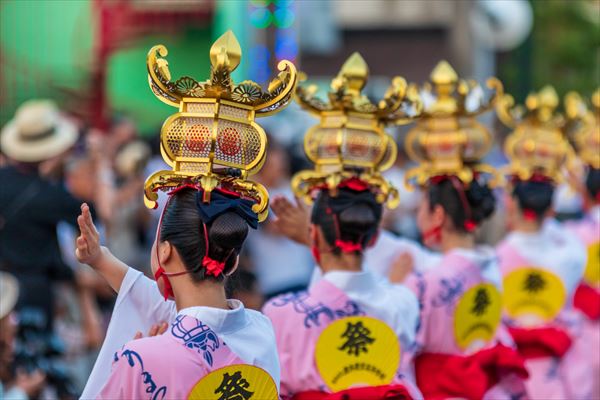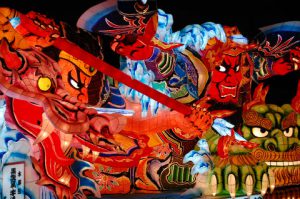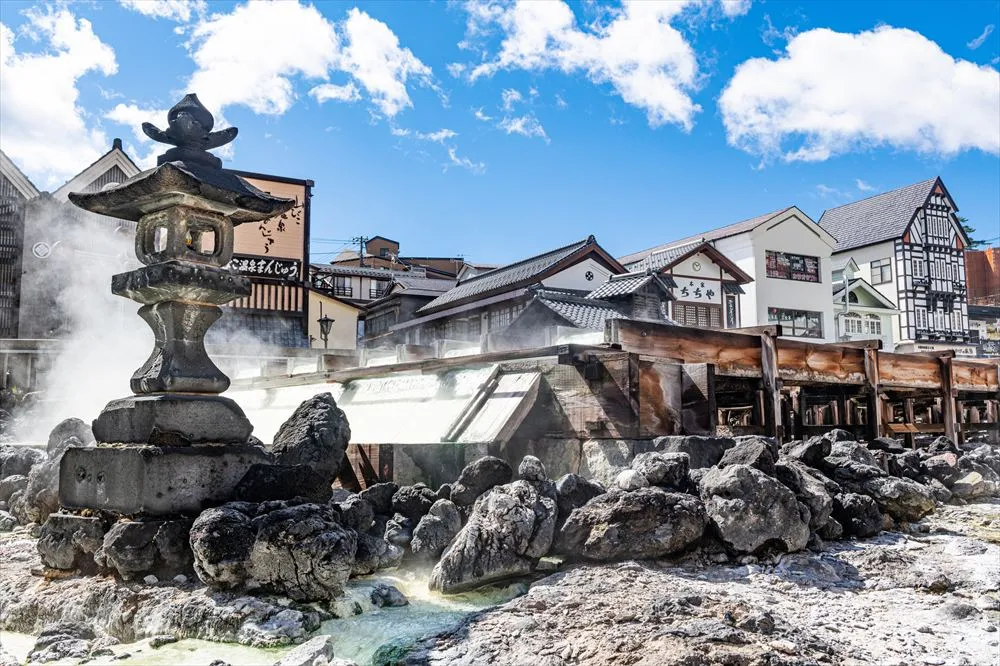In July, I took a two-day and one-night trip to Akita with my Chinese friends. Starting at Misato Town located in the central-east part of Akita Prefecture, I visited Nyuto Onsen hot spring village, Lake Tazawa, and Kakunodate. I highly recommend the route for anyone who wants to relieve his/her stress and who loves nature.
My trip to Misato Town, Nyuto Onsen, Lake Tazawa, and Kakunodate in Akita Prefecture
Misato Town, with high-quality spring water source
It takes about one hour by car from Akita Airport to Misato Town. While riding in the car, I could have a panoramic view of green mountains and broad farmlands. MisatoTown’s specialty is “spring water.” “Spring water” is pure water that flows from the surrounding mountains into the ground and comes out from the ground. The water is high in quality and contains minerals. There is a group of 26 spring water sources in Misato Town, called Rokugo Yusuigun. Among the sources, “Niteko Shimizu” is considered the best quality water source in Rokugo. In the Meiji period, “Niteko Shimizu” was offered to the Emperor who was visiting the area; therefore, the water is known as “gozen-sui” (“royal water”). The spring water in this area is still used as daily-life water, too. You can see places in the town where you can cool down or wash vegetables with the water.

Niteko’s spring water
When I visited Misato Town, it was 33 degrees Celsius, but the temperature of the spring water was only 13 degrees Celsius, offering me welcome coolness. Around Niteko Shimizu, with a restaurant called “Meisui-an,” along with an old tree and a small shrine, I could see the beauty of the traditional Japanese buildings. Watching local people getting spring water in pet bottles and washing vegetables and rice with spring water, I could imagine the peaceful life of the countryside. The spring water not only nurtures delicious rice and other agricultural products but also transforms into “Niteko Cider” and delicious Japanese sake.

Niteko landscape 
Odaidokoro
Nyuto Onsen village, standing in the native forest of Mount Nyuto
It takes about one hour and 15 minutes by car from Misato Town to Nyuto Onsen village. The Nyuto Onsen village is located in the native forest of Mount Nyuto. I stayed one night at “Taenoyu,” a family-run ryokan standing in a rustic hot-spring village. The building has a modern Japanese look. From the window of my room, I could see the waterfalls and green mountain forest very up-close. I enjoyed both types of natural hot spring water in Kin-no-yu (golden hot water, brown) and Gin-no-yu (silver water, clear). The water rich in iron is said to be effective for beautiful and firm skin. In addition, there are various kinds of bath, including an open-air mixed bath, private bath, and lie-down baths. I really enjoyed trying the various kinds of onsen.

Taenoyu’s front entrance 
Taenoyu’s Kin-no-yu (golden hot water) 
Taenoyu’s Gin-no-yu (silver hot water)
Next day, I visited “Tsurunoyu Onsen,” which has the longest history in the Nyuto Onsen village. This onsen is especially famous in the Nyuto Onsen village, which originally developed as a therapeutic bathing place in the Akita Domain. Near the entrance, I could see a quaint water wheel. The main building, with a thatched roof, is over 100 years old and is still used as an accommodation facility. The water house covered by a thick bunch of vegetation was reminiscent of the world of Japanese fairy tales. On the premises, there are four kinds of spring water sources with different qualities, such as white water and black water. You can also enjoy unique bathtubs. The specialty of this onsen is the white-water mixed open-air bath. The white color of the water was shining under the sunlight. The spring water source of the white-water mixed open-air bath is inside the bathtub, so you can feel hot spring water coming out from it. As the Chinese call a beautiful land which is isolated from the world and where people can live peacefully without any wars “Segai-no-togen” or “Shangri-La,” so I think “Tsurunoyu Onsen” is a Shangri-La in Japan.

Tsurunoyu Onsen 
Tsurunoyu Onsen  Tsurunoyu Onsen
Tsurunoyu Onsen
Lake Tazawa, with its beautiful indigo blue
Riding by car for about 30 minutes from Tsurunoyu Onsen, I could see a blue lake amid the trees. At the moment our car went through the mountain forest, I could have a wonderful view of a big cobalt-blue lake surrounded by grand green mountains. With skiing paths on the top of the mountain, deep-blue sky, and white clouds, it was like a landscape painting. This big lake is “Lake Tazawa,” one of the most famous tourist spots in Akita Prefecture. With a 20-km circumference and the deepest depth in Japan of 423.4 meters, this lake has a mystic atmosphere. During summer, you can enjoy water activities, such as boating and water skiing.
If you visit Lake Tazawa, don’t miss two tourist spots by the lake, “Ukiki-jinja Shrine” and “Tatsuko Statue.” Ukiki-jinja Shrine is a small shrine made with plain wood standing in the Katajiri area by Lake Tazawa. Since it was named “Kansagu” by Masudo Soshu, one of the retainers of the Akita domain, in 1769, it is also called “Kansagu.” The golden statue on the lake was created based on a motif of the legendary Tatsuko-hime Princess. It is said that Tatsuko, a beautiful girl who wished for eternal beauty, prayed to the Okura Kannnon deity and, on the night when her wish came true, turned into a huge dragon, becoming the lord of the lake.

Ukiki-jinja Shrine 
Tatsuko Statue
Kakunodate, with old samurai residences
The last tourist spot I visited was Kakunodate. From around 1620, Kakunodate prospered as the biggest castle town of the Akita Domain. The elegant streetscapes incorporating cultural features of Kyoto are also popularly referred to as a “Little Kyoto.” There are still old bukeyashiki (samurai residences) in the area, with beautiful seasonal scenery. I heard that the spring in Kakunodate is very beautiful with weeping cherry trees over 300 years old in full bloom along Bukeyashiki-dori Street. Although this area is very busy in spring with many people coming for viewing cherry blossoms, which decorate the whole town colorfully, in July I could enjoy the relaxing atmosphere as well as strolling around fully enjoying the historic flavor of Kakunodate. I could feel the coolness of early summer and the unique beauty from the contrast between the black walls and green leaves. “Kakunodate Kabazaiku Densho-kan” is a cultural museum which introduces kabazaiku (cherry bark woodwork), a traditional craft of Kakunodate, as well as the history of the area. I could appreciate the charms of the finished kabazaiku products through watching a live demonstration of the craft techniques.

Kakunodate 
Kabazaiku Densho-kan







